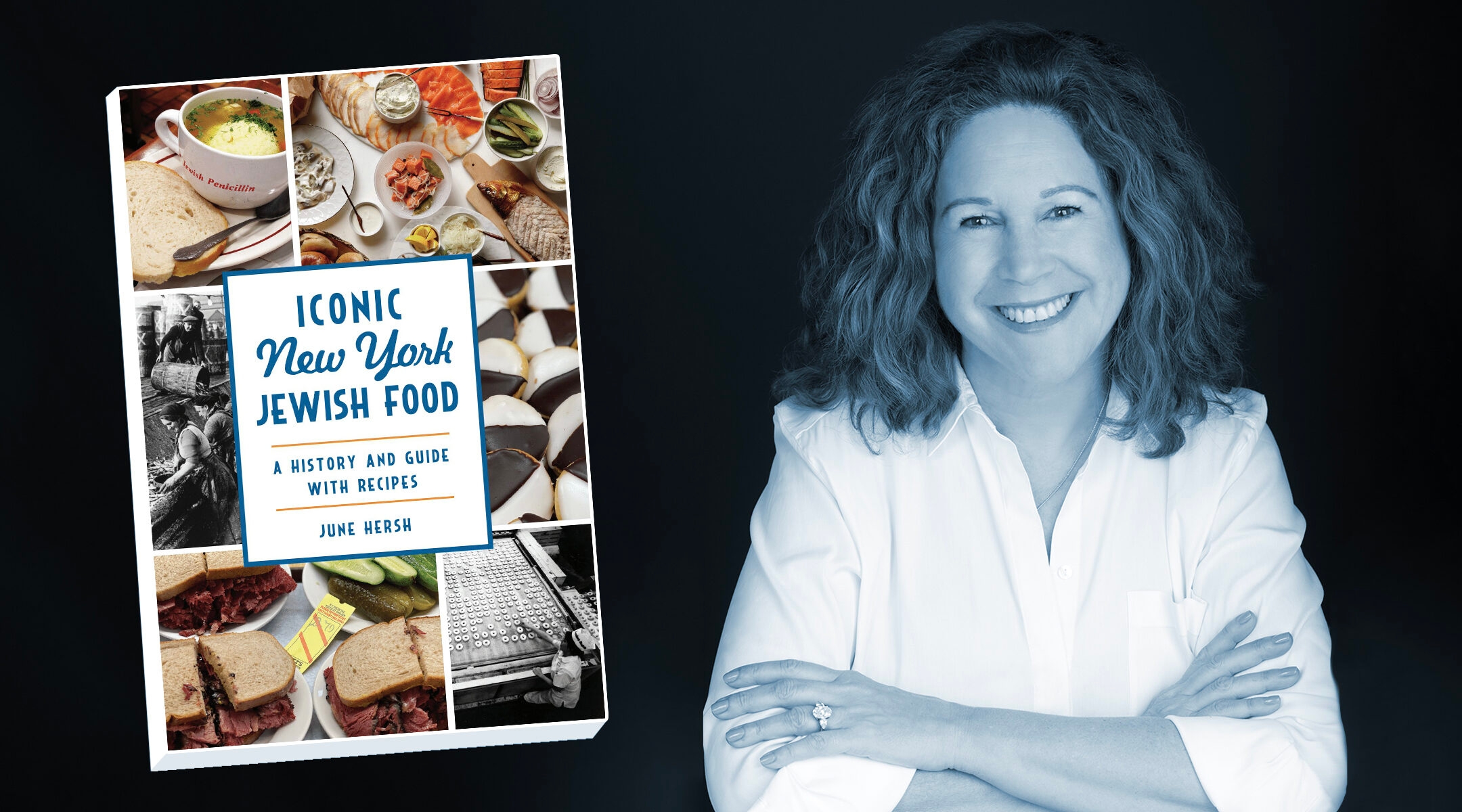(New York Jewish Week) — In 2004, June Hersh and her family sold the Bronx-based lighting business that her father founded almost 50 years earlier. Hersh, along with her mother, sister and their husbands, all worked there. The day of the sale, her sister, Andrea Greene, turned to Hersh and said: “We did well! Now, let’s do good.”
Greene, a breast cancer survivor, became a volunteer for the Israel Cancer Research Fund. Hersh, who was 48 at the time, asked herself what her “good” would be — she loved to cook, and she loved to write.
A couple of years later, she approached David Marwell, then the director of The Museum of Jewish Heritage–A Living Memorial to the Holocaust, offering to write a cookbook to benefit the museum. In it, she would tell the stories and recreate the recipes of museum members who were Holocaust survivors. The book, “Recipes Remembered, A Celebration of Survival” was published in 2011. To date, 25,000 copies of the book have been sold to benefit the museum as well as other Jewish organizations.
Since then, Hersh has written several other books with a philanthropic component, including “The Kosher Carnivore: The Ultimate Meat and Poultry Cookbook,” which benefited MAZON: A Jewish Response to Hunger, and “Still Here: Inspiration from Survivors and Liberators of the Holocaust” with proceeds donated to Selfhelp, a social services agency aiding Holocaust survivors and the elderly in the New York metropolitan area.
This month, her fifth book, “Iconic New York Jewish Food,” was published, benefitting Met Council, a New York-based Jewish charity serving more than 315,000 needy people each year. As Met Council CEO David Greenfield writes in the book’s foreword, the organization operates “the largest emergency food system in America, focused on helping individuals and families who maintain kosher diets, as well as other religiously informed dietary practices.”
Hersh said was moved by Met Council’s inclusivity. “I don’t think Jewish organizations ever help only Jewish people,” she told the New York Jewish Week. “They always have a broad reach, and I am proud of that.”
In “Iconic New York Jewish Foods,” Hersh writes about Jewish foods that have, over time, become New York foods: bagels, egg creams, cheesecake, hot dogs and much more. The book combines humor (one chapter is titled: “Doesn’t That Look Appetizing: The Birth of a New York Phenomenon”), history (the evolution of the hot dog bun, for example) and recipes (like “Mash Up Hash Up Latkes,” potato pancakes made with corned beef and pastrami).
Hersh spoke with the New York Jewish Week about her book, what makes a Jewish food iconic, and what’s special about New York City.
This interview has been lightly edited for length and clarity.
New York Jewish Week: What inspired you to write a book about iconic New York Jewish foods?
June Hersh: In the world of food, I have two passions. One is to tell the history of food. What is its lineage? How did it come to be? Who first ate it? Why is it important? My second passion is preserving the food memory of the Jewish people. I don’t think anything binds us together like food. It is the connective thread in the Jewish story.
What makes a food Jewish?
Most Jewish food is not easy to define. For Ruth Kohn, a Jewish refugee from Germany, arroz con pollo became a Jewish food that she made in her new home in Sosua, Dominican Republic. If you are looking for Jewish food, throw a dart on a map. Wherever it lands, you will find someone making Jewish food. It might not be the Jewish food we identify with, but it is Jewish food. It is informed by something in one’s heritage and culture — where the makers of it left or where they landed.
My grandmother was from the island of Rhodes. Her family came from Spain, and she spoke Ladino. Her food was informed by the Spanish techniques of her family and the Greek influences of the country where they landed after their expulsion from Spain.
Given your Sephardic background, why is the focus of the book on Ashkenazi foods?
Ashkenazi, Eastern European food is what informed the Jewish foodways of New York. The only iconic Sephardic food [in New York] is Turkish taffy which was introduced here by Herman Herer from Austria and Albert Bonomo, from Turkey.
What makes a Jewish food iconic?
A Jewish food becomes iconic when it is prevalent on menus, and not just in Jewish restaurants. Iconic food is something that has become part of everyone’s food culture.
An example would be New York cheesecake, a food you see on mainstream menus. Cheesecake, according to Alan Rosen, a third-generation proprietor of Junior’s, a Brooklyn restaurant known for it, is one of the most ordered desserts in any restaurant anywhere. And cheesecake didn’t exist in the same form in which it exists now until you had Jewish immigrants.
People eat hot dogs on rolls all the time. You didn’t have hot dogs on rolls until you had Jewish immigrants; that was born out of ingenuity, which is part of what I admire and respect and celebrate in Jewish food.
Can you give some examples of how Jewish food is embraced in NYC at large?
One of the best New York City bagel shops, Absolute Bagels, is run by a Thai baker. One of the best examples of old-school brisket comes from David’s Brisket House, owned by non-Jewish Yemenites. The beauty of the Jewish food of New York is how it is embraced by so many cultures who then give their spin and interpretation.
The New York Jewish Week brings you the stories behind the headlines, keeping you connected to Jewish life in New York. Help sustain the reporting you trust by donating today.





